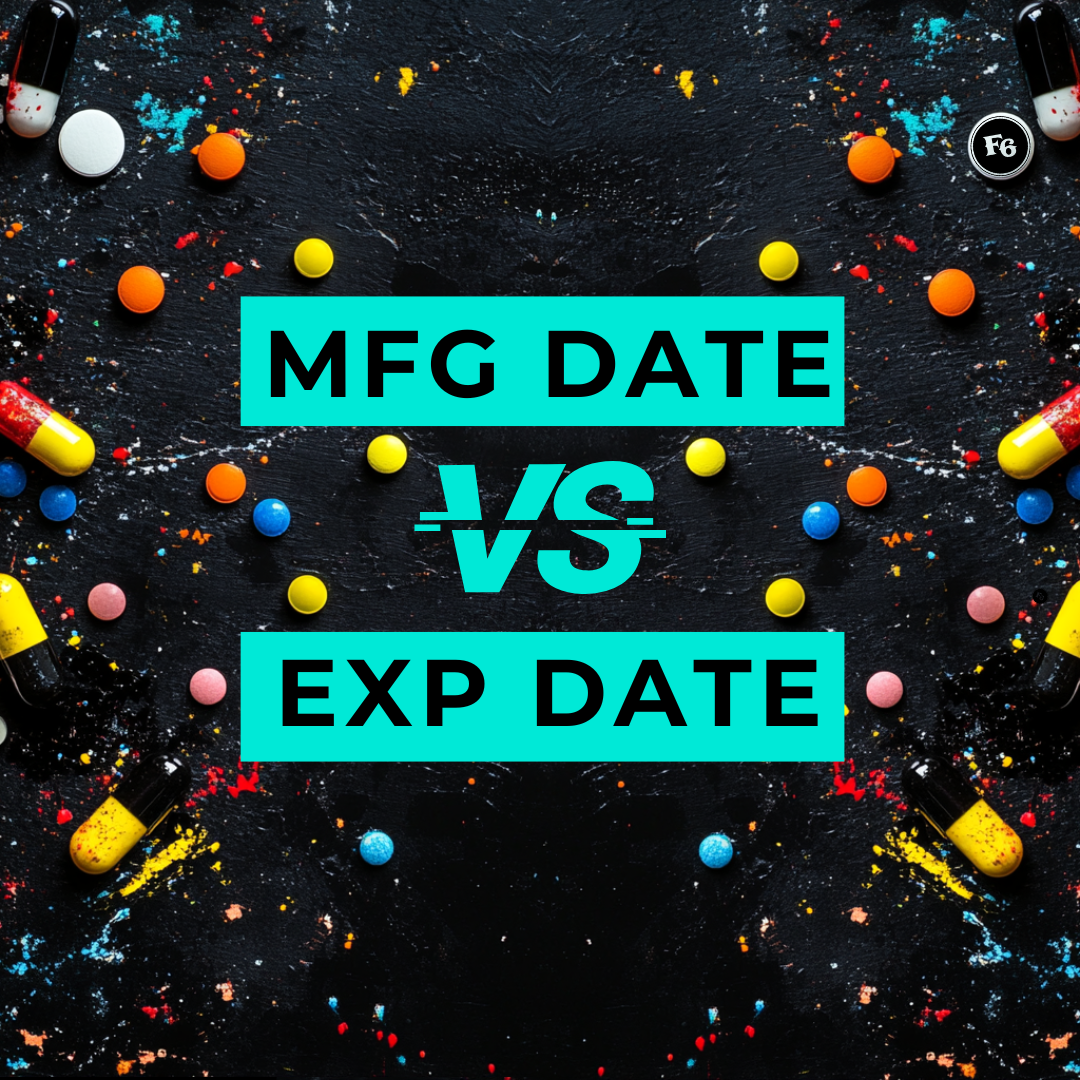Manufacture Date vs. Expiration Date: What Supplement Brands Need to Know
When it comes to supplement labeling, one small line can make a big difference: the date printed on the bottle. Is it the Manufacture Date (MFG Date) or an Expiration Date? For consumers, it’s often a quick cue for freshness. For brands, it’s a matter of compliance, traceability, and credibility.
At Factory6, our default is to use the Manufacture Date, but there are situations where an Expiration Date makes sense, and when that happens, it needs to be backed by hard data.
Why Factory6 Uses Manufacture Date by Default
Our standard lot coding practice includes the Manufacture Date (MFG Date). This date tells you exactly when the product was made, with no misleading shelf life claims.
Key advantages:
Regulatory compliance – The FDA does not require expiration dating for dietary supplements. However, if you choose to include one, you must have data showing the product meets label claims through that date (per 21 CFR Part 111). Without testing, adding an arbitrary expiration date risks misbranding.
Traceability – The MFG Date allows you to quickly identify production runs during audits, quality checks, or recalls.
Inventory management – Warehouses and retailers can rotate stock effectively using a known production date.
Transparency – You’re not overpromising shelf life. You’re giving customers the facts.
Common Misconceptions About MFG Dates
Some consumers assume the MFG Date is the date after which the product is no longer effective. In reality, it’s simply a starting point for determining shelf life. Most well-formulated supplements, when stored correctly, remain within specification for 1–3 years after manufacture. Educating customers about this difference can improve trust and reduce unnecessary returns.
When an Expiration Date Makes Sense
Certain brands, especially those selling into major retail chains, prefer an Expiration Date because it’s more consumer-friendly and can reassure buyers that the product will remain effective for a defined period.
If you choose this route, there are strict requirements:
Provide the desired expiration date in writing for each product.
Sign the Factory6 MFG vs. Expiration Date Waiver acknowledging the change.
Conduct stability testing to prove the product stays within specification through that date.
Without these steps, you cannot legally or ethically put an expiration date on your supplement label.
How Stability Testing Works
Stability testing determines how long your product maintains potency, safety, and quality. For supplements, it typically includes:
Accelerated stability testing – Stores product at elevated temperature and humidity (often 40°C/75% RH) to simulate aging and predict long-term stability quickly.
Real-time stability testing – Stores product under normal conditions, testing at set intervals.
Potency testing – Confirms active ingredients remain at labeled levels throughout shelf life.
Microbiological testing – Ensures product remains free from harmful bacteria, yeast, and mold.
Most brands start with accelerated testing for a preliminary estimate, then confirm with real-time testing for ongoing validation.
Packaging’s Role in Shelf Life
The right packaging can make a measurable difference in stability testing outcomes:
Bottles with desiccants – Help control moisture for hygroscopic ingredients.
Foil blister packs – Provide excellent moisture and oxygen barriers for tablets and capsules.
Stick packs or sachets – Offer single-serve protection from environmental exposure.
Opaque containers – Shield sensitive ingredients from UV degradation.
Choosing packaging strategically can reduce potency loss and extend shelf life, which may help you achieve a longer expiration date.
Typical Costs & Timelines for Stability Testing
Costs vary depending on product type, complexity, and number of testing points:
Accelerated stability testing – $1,500–$4,000 per SKU | 6–12 weeks.
Real-time stability testing – $2,500–$6,000+ per SKU | 12–24 months.
Lab fees are billed directly by the testing facility. Factory6 can recommend trusted labs, but we are not a party to the testing agreement.
Business Implications: MFG Date vs. Expiration Date
Regulatory Risk:
MFG Date: Low — no extra substantiation required.
Expiration Date: Higher — must be supported by stability data.
Consumer Perception:
MFG Date: Neutral to positive among educated buyers who understand freshness.
Expiration Date: Often seen as more reassuring, especially for mass-market shoppers.
Retail Acceptance:
MFG Date: Accepted by most retailers.
Expiration Date: Sometimes preferred or required by larger retail chains.
Cost Impact:
MFG Date: No extra cost beyond standard manufacturing.
Expiration Date: Additional investment for testing and validation.
Shelf Life Transparency:
MFG Date: Shows exactly when the product was made.
Expiration Date: Implies a specific guarantee of potency and safety.
Real-World Scenarios
Sports nutrition brand – Launches a creatine chewable with MFG Date only. They sell direct-to-consumer and have rapid inventory turnover, making shelf life concerns minimal.
Probiotic brand entering national retail – Invests in full stability testing to support a 2-year expiration date. This allows them to compete head-to-head with other shelf-stable probiotic brands.
Herbal supplement line – Uses MFG Date but adds a “Best By” date based on internal accelerated stability data, helping bridge consumer understanding without making unsubstantiated claims.
FAQs
Q: What’s the difference between “Best By” and “Expiration Date”?
A: “Best By” suggests peak quality, not safety, and can be based on internal testing. “Expiration Date” guarantees safety and potency through the date and requires stability data.
Q: How long do most supplements last after the MFG Date?
A: It depends on the formulation and packaging. Many remain stable for 1–3 years if stored properly, but without testing, you can’t claim a specific shelf life.
Q: Do probiotics, enzymes, or other live ingredients require special testing?
A: Yes. These ingredients are more sensitive to heat, light, and moisture, often requiring advanced stability protocols.
Bottom Line for Brands
MFG Date = Default for compliance, cost savings, and transparency.
Expiration Date = Added investment, but can boost retail appeal and consumer trust.
Stability testing is the only way to substantiate an expiration date.
At Factory6, we help brands choose the right path for their labeling, connect them with trusted labs, and ensure every product meets the highest quality standards from day one. For more information, contact your Factory6 project manager.

